Displays, displays, displays…
Posted: 21 September 2011 Filed under: Electronics, Pinball Champ '82 | Tags: display, electronics, pinball, zaccaria, ZM1550 Leave a comment »
Guess what I’ve been doing yesterday… correct! Fixing displays…
As you might remember from a previous post, I had two working displays and three that needed work.
Well, after a days work, I have three working displays, and components ordered to make that five (5) working displays!
I had three 4×2 digit display boards with faulty ZM modules. So after some soldering magic, I now have two more working 4×2 digit display boards and one with two (possibly three) faulty ZM modules. Luckily I found a fellow enthousiast who has a few Valvo ZM1550 modules to spare, so there should be four of them coming my way soon! YAY!
Three of the display driver boards were faulty. After some testing, I found one board with a faulty IC2 (4042) and two boards with a faulty BF422’s. From the two boards with the faulty BF422’s, I made one working one. With the BF422 transistors and the 4042 chip on order, the display driver boards should be ready.
Pinball life is good!
Memory check: passed!
Posted: 19 September 2011 Filed under: Electronics, Pinball Champ '82 | Tags: cpu, display, driver board, electronics, memory, pinball, zaccaria Leave a comment »
The mailman (actually a woman) had my new memory with her today! It took me all of 5 minutes to get the old 2114L out of the CPU board and the new 40L45 in. Popped Leon’s test EPROM back in and bingo, memory test passed!
After that I did the input checks and I’m happy to say that that passed as well. So now all I need are the 3081 driver chips and probably a BC548 transistor (TR3) and the CPU board should be fixed fixed!
So I assembled everything except for the sound board and switched the machine on. There was life… sort of.
I found the test button to be unresponsive, but when I put the CPU board in program mode using the dipswitch it did kind of start of normally. It was even able to kick the ball out of the out hole and the flippers, some bumpers and the poppers worked. But not much else. So the driver board needs work.
Also, only two of the five 4×2-digit displays were fully functional, so 3 of them to check and fix.
Still a lot of work ahead. To be continued…
Back home and back to work!
Posted: 18 September 2011 Filed under: Electronics, Pinball Champ '82 | Tags: cpu, display, electronics, eprom, memory, pinball, sound, test program, zaccaria Leave a comment »
Finally back from Sweden. There were quite a few packages waiting for me! Unfortunately, the TMS40L45 wasn’t one of them, so I couldn’t start work on the CPU board.
Or so I tought…
I started Leon’s test EPROM again and started testing all the outputs since I skipped over that test to find out if the memories where good. Well, I found two 3081 chips that are dead… that kind of explains why the LED on the soundboard always comes on when I attach it to the CPU board. So I’ve ordered a couple of those 3081’s and they should be here in a couple of days.
I also saw that all the signals on the CN14 connector for the displays were there, so I started fooling around with the idea of writing a little program to see if the displays still work. I guess I can’t wait for the CPU board to be fixed so I can use the built in tests. And it does keep me out of other trouble 😉
Anyway, I’m waiting for my EPROM to be erased to put the 3rd try on it. I have a good feeling this time… But then again, I had a good feeling every time.
If it works, I’ll let you know and post the program and some pictures.
Parts incoming!
Posted: 9 September 2011 Filed under: Electronics, General, Mechanics, Pinball Champ '82 | Tags: buy, cpu, electronics, mechanics, memory, pinball, zaccaria Leave a comment »
Although I’m in Sweden this week and the next, I haven’t forgotten about my pinball machine…
I’ve been franticly searching the Internet looking for those elusive parts that I so dearly need to get the machine back to pristine condition and I think I’ve done it.
From the Multigame site (see the links section) I’ve ordered a rubber set, a new pinball, a doorlock and some more small parts, together with some cleaning materials.
David, from www.zaccaria-pinball.com has sold me a spare “H” target and a replica door sticker and they are on the way.
And then the two memory chips… The 6514J-0 was relatively easy to find. A search on ebay found three vendors in the US, so I ordered one and it’s on the way. The 2114L was an alltogether different story. No hits on ebay or anywhere else.
It was even hard to find the correct datasheets for this memory chip, but after going through dozens of datasheets, I finally found the correct one. I’ve put it up here in the datasheets section on the right, so you don’t have to go through that experience yourself.
I found out that Texas Instruments made the same memory at different speeds, after looking up those datasheets and checking the TI speeds with the ones from Intersil, I started looking for a TMS2114L-45NL. Again, no luck 🙁
Then I noticed that the top of the Texas Instruments datasheets state “Previously Called TMS40L45”, so I searched for a TMS40L45-45NL on ebay and BINGO, there’s one on the way 🙂
According to the datasheets it should work, but I guess you never know until you put it in the CPU board and run the test.
Since I spend a lot of time looking for datasheets, I’ve decided to put them up here for anyone else that might be restoring a similar machine…
One step closer
Posted: 5 September 2011 Filed under: Electronics, Pinball Champ '82 | Tags: cpu, electronics, eprom, memory, pinball, zaccaria Leave a comment »
I finally managed to get my Willem EPROM programmer working in Windows 7 thanks to this article from Doug Brown. Thanks Doug! http://www.downtowndougbrown.com/2010/10/sivava-willem-eprom-programmer-on-windows-7-64-bit/
So after copying the original EPROM’s contents to my HDD (you never know!), I made a test EPROM on a 2532 chip as described on Leon’s Flipper-Fan site (see my links) and set up my test environment.
I ran the test a couple of times and found that the memory test fails every time!
So I need to replace the two memory chips, both ancient and hard to find…
I have already found a few online stores that sell the 6514J-9, but as for the 2114, no luck yet…
I’ll start by ordering the 6514J-9 and hope the 2114 still works. If not, I’ll need to look for a replacement.
Anyway, I’m in a hotel in Sweden for the next two weeks, doing some work, so there won’t be a lot of updates until I get back.
Cheers!
Which tools do I use?
Posted: 30 August 2011 Filed under: Electronics, General | Tags: eprom, logic probe, pinball, tools Leave a comment »
Well, so far it’s quite straightforward… a digital multimeter (I use the Velleman DVM-4100), a 30W soldering iron and a whole range of screwdrivers and pliers.
In preparation of repairing the CPU board, I have bought a Willem EPROM programmer (off ebay), two 2532 EPROMS (oh yes, I found some) and made a logic probe as described on the flipper-pinball-fan website (see my links).
Now I’m waiting for a PCMCIA Parallel port card for my laptop, so I can connect the EPROM programmer and make me a copy of Leon’s test EPROM from the flipper-pinball-fan website (see my links). Then the testing will continue!
The electronics
Posted: 30 August 2011 Filed under: Electronics, Pinball Champ '82 | Tags: cpu, electronics, pinball, power supply, sound, zaccaria Leave a comment »
Before switching on the pinball machine for the first time, I checked the input voltage settings on the main transformer and the fuses there and I checked the fuses on the power supply board. I needed to replace one fuse, it looked good, but when I measured it with my multimeter it failed the test.
Then I finally switched the machine on. Nothing happened. Then I plugged in the power cord and tried again… Lights came on, displays flickered at random and then went out. That was it.
Clearly things are not working as they should, time for some troubleshooting.
So where to start? With the power supply ofcourse!
The first thing I noticed was no -5VDC due to a defective 7905. Off to the store I went and now the power supply has a brand new 7905.
Unfortunately after fixing the -5VDC I tested again and the 170VDC was gone. After a few measurements I noticed that TR3 (2N3440) had come loose from the PCB. Shabby soldering? That knocked out R6 (47 Ohm 3W) as well. Off to the shop I went again. I had to use a 5W resistor, but that’s not a problem.
I reconnected the power supply board into the pinball machine and tried again. Except for a pop from the loudspeaker when switching on nothing changed. I disconnected everything except the sound board and after pressing the test button on it, the LED blinked 5 times and the pinball machine started talking to me 🙂
The Sound Test video, best viewed with VLC media player (see my links section).
I disconnected the sound board and reattached the CPU board. It would not boot. After some reading on zaccaria-pinball.com (see my links section) I checked the Power Fail signal coming from the power supply board and yes, it was the wrong signal 🙁
So I did what all good technicians do and disconnected the lead from the connector. Problem solved. I promise to get the power fail circuit fixed later on. I promise!
After retrying to boot the CPU, it actually did… sort of. I starts booting but then keeps hanging somewhere. When measuring the test points, I don’t get the pulse signal on TP6. Further testing and digging in the schematics is necessary. To be continued…


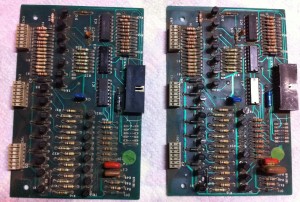

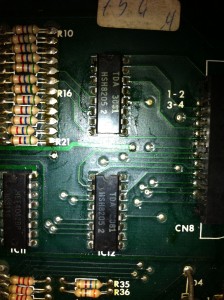

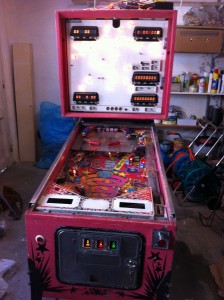
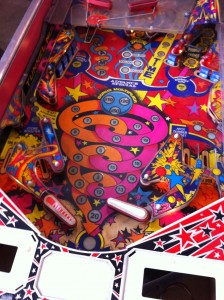

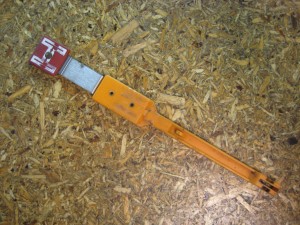
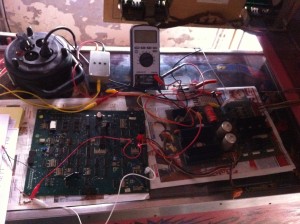
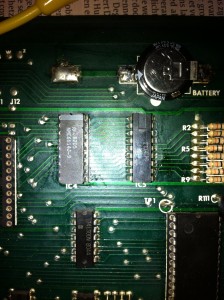
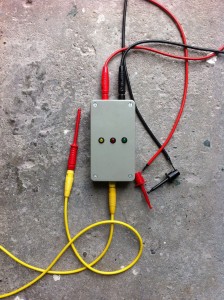
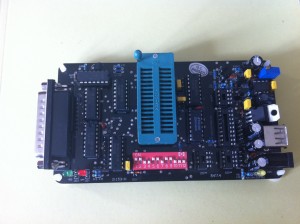
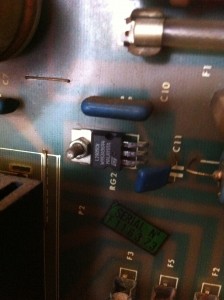
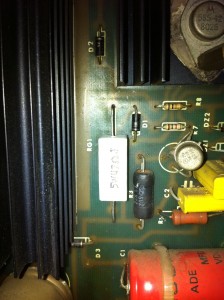
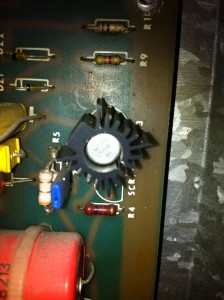
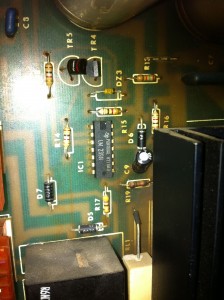
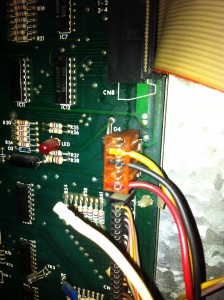
 Flippers.be
Flippers.be Videolan.org – The home of VLC
Videolan.org – The home of VLC